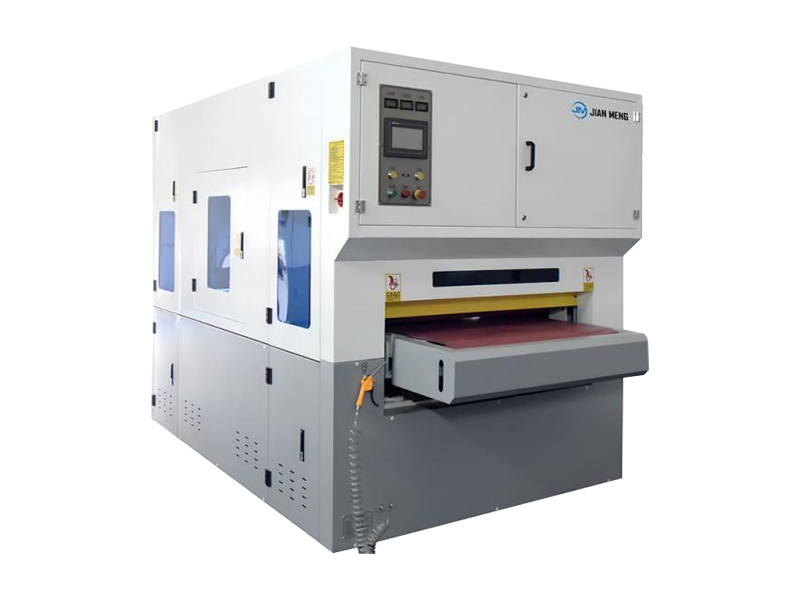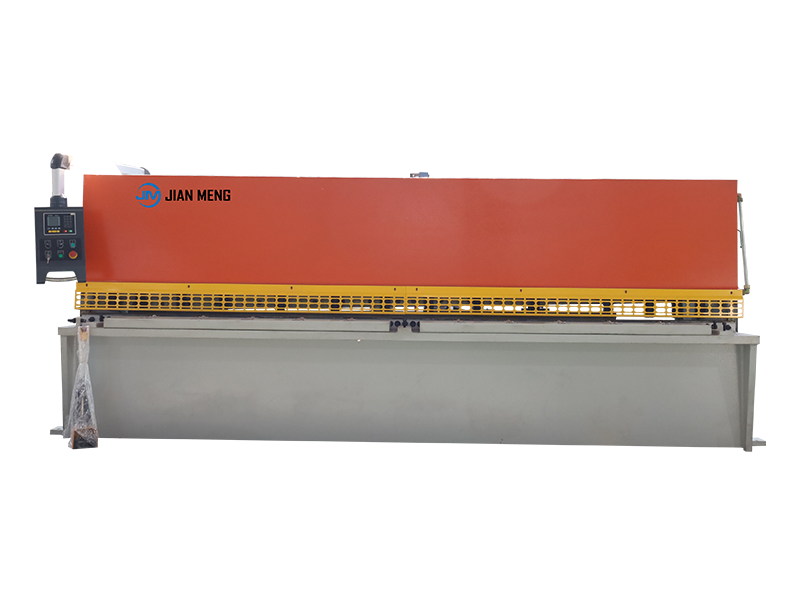Selecting an optimal vibratory deburring machine is a technical decision that directly impacts process efficiency (cycle time, throughput), part quality (surface finish, dimensional precision), and total cost of ownership (TCO) in metalworking operations. Unlike generic "one-size-fits-all" equipment, vibratory deburring machines require alignment with specific workpiece properties, production volumes, and quality standards—whether for automotive component manufacturing, aerospace precision parts, or small-batch custom fabrication. This guide provides a structured, technical framework for selection, emphasizing quantifiable parameters, process matching, and long-term operational sustainability.
1. Technical Definition & Core Operating Principles
A
vibratory deburring machine is a mass-finishing equipment that removes burrs, sharp edges, and surface defects from workpieces via controlled mechanical interaction between the part, abrasive media, and optional compound (cleaning/lubricating agents). Its operation relies on three key technical principles:
- Vibratory Motion: Generated by an eccentrically weighted motor (1–15 kW) that produces sinusoidal vibration at 10–60 Hz (frequency) and 0.5–5 mm (amplitude). This motion causes the media-workpiece mixture to flow in a spiral pattern, creating consistent, low-impact abrasion.
- Media-Part Interaction: The abrasive media acts as a "flexible tool"—its hardness, shape, and size determine the deburring intensity and surface finish (e.g., aggressive media for heavy burrs, fine media for polishing).
- Process Kinetics: Cycle time (5–120 minutes) is governed by the burr size (0.1–2 mm), workpiece material hardness (e.g., HRC 20–65 for metals), and desired surface roughness (Ra 0.1–2.0 μm).
2. Core Technical Selection Criteria
The selection process must prioritize parameters that align the machine with your specific workpiece and production requirements. Below is a detailed breakdown of critical criteria:
2.1 Capacity & Workload Matching
Capacity is not merely "volume"—it refers to the machine’s ability to process workpieces without compromising quality or efficiency. Key technical metrics:
- Effective Working Volume: The internal drum volume (typically 50–5,000 L) available for workpieces + media, excluding dead space. Optimal load ratio: 60–80% (e.g., a 100 L drum should hold 60–80 L of combined parts + media). Overloading (>80%) causes uneven deburring; underloading (<60%) wastes energy and increases cycle time.
- Workpiece Compatibility:
- Size Range: Ensure the drum dimensions (diameter × length) accommodate your largest part (e.g., a 300 mm × 500 mm drum for parts up to 200 mm in length).
- Weight Limit: Avoid exceeding the machine’s maximum load capacity (10–500 kg) to prevent motor strain and vibration imbalance.
- Throughput Rate: Calculate required throughput (parts/hour) and match to machine cycle time. For example: A 20 L machine processing 50 g aluminum parts (100 parts/batch) with a 15-minute cycle = 400 parts/hour.
2.2 Abrasive Media Matching
Media selection is the most critical factor for achieving target deburring results and avoiding workpiece damage. Media is classified by material, morphology (shape), size, and hardness—each tailored to specific workpiece properties:
| Media Type | Hardness (Mohs Scale) | Morphology | Ideal Workpiece Material | Application Goal |
|----------------|----------------------------|----------------------|-------------------------------------|---------------------------------------|
| Ceramic | 7–8 | Cylinder, Triangle, Star | High-strength steel (HRC 45+), Titanium | Heavy deburring, edge breaking (0.1–0.5 mm radius) |
| Plastic (Nylon/Polyester) | 2–3 | Sphere, Cylinder | Aluminum, Copper, Brass (soft metals) | Fine deburring, surface polishing (Ra 0.2–0.8 μm) |
| Steel | 5–6 | Ball, Pin | Stainless Steel, Tool Steel | Surface densification, rust removal |
| Corn Cob/Walnut Shell | 1–2 | Granule | Delicate parts (e.g., electronics, medical devices) | Gentle cleaning, deburring of thin-walled components |
Key Tip: Media size should be 30–50% of the smallest workpiece feature (e.g., 3 mm media for parts with 5 mm holes) to avoid media lodging in cavities.
2.3 Automation Level & Process Integration
Automation reduces labor costs, improves repeatability, and enables 24/7 operation. Select an automation level based on production scale and labor availability:
| Automation Level | Technical Features | Ideal Production Scale | TCO Impact |
|-----------------------|----------------------------------------------------------------------------------------|-----------------------------------|-----------------------------------------|
| Manual | Hand-loaded/unloaded, manual media separation, basic timer control. | <500 parts/day (small batches) | Low upfront cost; high labor cost (~30% of TCO). |
| Semi-Automatic | Integrated media-part separator (sieve or magnetic), PLC-based cycle control, touchscreen HMI. | 500–5,000 parts/day | Moderate upfront cost; 50% labor reduction. |
| Fully Automatic | Conveyor-fed loading/unloading, robotic part handling, closed-loop process monitoring (e.g., surface roughness sensors), MES integration. | >5,000 parts/day (high-volume) | High upfront cost; 80% labor reduction; consistent quality. |
Critical Automation Features:
- Media Separation System: Magnetic separators for ferrous parts; air-blast separators for lightweight parts (e.g., aluminum).
- Process Monitoring: Sensors to track vibration amplitude (±0.1 mm tolerance) and media wear (replace when media size reduces by >20%).
2.4 Control System Precision
Modern vibratory deburring machines rely on advanced controls to tailor processes to different workpieces. Key technical capabilities to prioritize:
- Vibration Parameter Adjustment: Independent control of frequency (10–60 Hz) and amplitude (0.5–5 mm) — e.g., high amplitude (3–5 mm) for heavy burrs; low amplitude (0.5–1 mm) for fine polishing.
- Cycle Time Programming: Multi-step programming (e.g., 5 minutes high-intensity deburring → 10 minutes low-intensity polishing) for complex part requirements.
- Closed-Loop Feedback: Optional integration with surface roughness gauges (Ra/Rz measurement) to automatically adjust cycle time if quality deviates from specs (e.g., extend by 2 minutes if Ra > 0.8 μm).
3. Operational Requirement Assessment
Before selecting a machine, quantify your operational constraints and quality targets using the following technical checklist:
| Requirement Category | Technical Questions to Answer |
|---------------------------|---------------------------------------------------------------------------------------------------|
| Workpiece Properties | 1. Material hardness (HRC/Rockwell scale)?<br>2. Target surface finish (Ra/Rz value)?<br>3. Burr size/location (e.g., 0.3 mm burrs on drilled holes)?<br>4. Part geometry (e.g., thin-walled, blind holes, complex cavities)? |
| Production Metrics | 1. Required throughput (parts/hour)?<br>2. Batch size (10–10,000 parts/batch)?<br>3. Production shift pattern (1/2/3 shifts/day)? |
| Facility Constraints | 1. Available floor space (L×W×H)?<br>2. Power supply (220V/380V, single/three-phase)?<br>3. Noise limit (e.g., ≤85 dB per OSHA standards)?<br>4. Waste management (e.g., need for media dust collection or compound recycling)? |
| Quality Standards | 1. Industry-specific requirements (e.g., ISO 1302 for surface texture, AS9100 for aerospace parts)?<br>2. Dimensional tolerance impact (e.g., will deburring affect critical dimensions ±0.05 mm)? |
4. Total Cost of Ownership (TCO) Analysis
Upfront purchase cost represents only 30–40% of TCO. Evaluate long-term expenses to avoid costly surprises:
4.1 Fixed Costs
- Purchase Price: Varies by capacity (e.g., $5,000–$15,000 for 50–200 L manual machines; $50,000–$200,000 for 500–2,000 L fully automatic machines).
4.2 Variable Costs
- Media Replacement: Ceramic media lasts 3–6 months (cost: $0.5–$2 per kg); plastic media lasts 1–3 months (cost: $1–$3 per kg).
- Compound (Cleaning/Lubricating): $0.1–$0.5 per liter of machine volume per week.
- Energy Consumption: 1–15 kW/h (e.g., a 5 kW machine running 8 hours/day = 40 kW/day; ~$5/day at $0.12/kW).
- Maintenance: Replaceable parts (polyurethane drum lining: $500–$2,000 every 2–3 years; vibration motor bearings: $100–$300 every year).
4.3 Hidden Costs
- Downtime: Unplanned downtime (e.g., motor failure) costs $100–$1,000/hour (varies by industry). Prioritize machines with MTBF (Mean Time Between Failures) >5,000 hours and MTTR (Mean Time to Repair) <2 hours.
- Rejection Rate: Poorly matched machines cause 5–15% part rejection. A machine with closed-loop quality control reduces this to <1%.
5. Manufacturer & After-Sales Support Evaluation
Selecting a reputable manufacturer is critical for long-term reliability. Key evaluation criteria:
5.1 Technical Credentials
- Industry Certifications: ISO 9001 (quality management), CE (safety compliance), or specific certifications for regulated industries (e.g., FDA for medical device manufacturing).
- Application Expertise: Does the manufacturer have case studies in your industry? (e.g., supplying automotive Tier 1 suppliers or aerospace primes).
5.2 After-Sales Support
- Spare Parts Availability: 24–48 hour delivery for critical parts (e.g., motors, drum linings); local spare parts inventory is ideal.
- Service Response Time: On-site service within 48 hours for breakdowns; remote diagnostic support (via IoT) for quick troubleshooting.
- Warranty Coverage: Minimum 1-year warranty on the machine, 2 years on the motor (extended warranties available for high-volume operations).
5.3 Validation & Testing
Reputable manufacturers offer pre-purchase testing (e.g., sending your workpieces for a trial run) to validate deburring results, cycle time, and media selection—this avoids mismatched equipment and ensures ROI.


 English
English  中文
中文  Arabic
Arabic  Russian
Russian  Spanish
Spanish  Portuguese
Portuguese  French
French  German
German  Hindi
Hindi  Thai
Thai  Vietnamese
Vietnamese  Khmer
Khmer  Italian
Italian  Turkish
Turkish  Korean
Korean  Belarusian
Belarusian 



